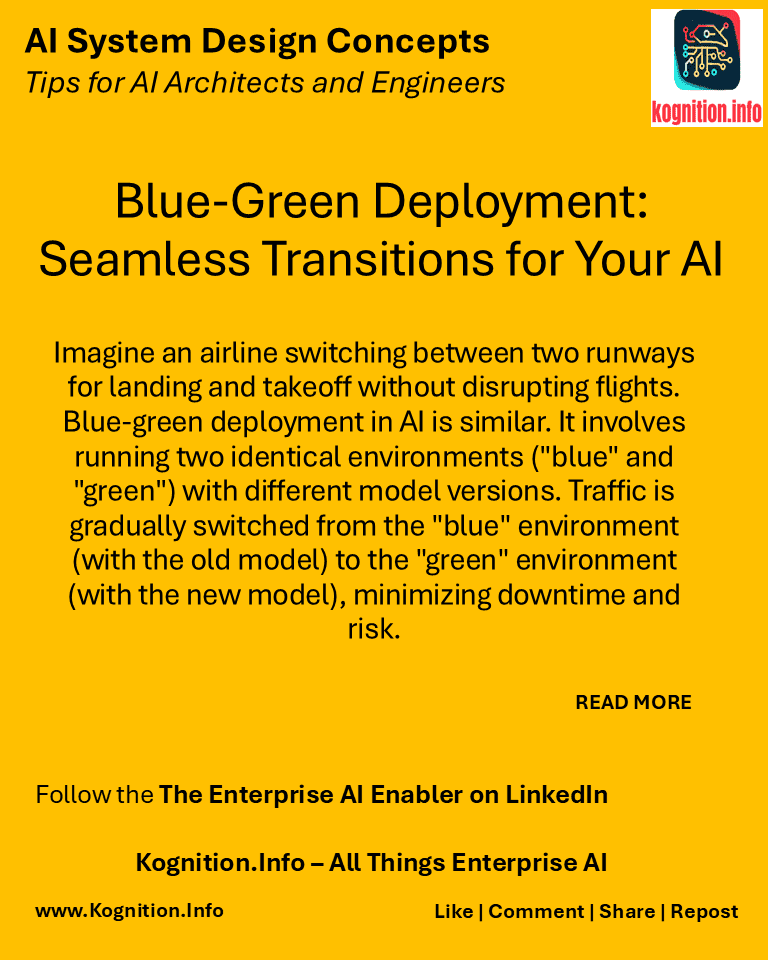
Imagine an airline switching between two runways for landing and takeoff without disrupting flights. Blue-green deployment in AI is similar. It involves running two identical environments (“blue” and “green”) with different model versions. Traffic is gradually switched from the “blue” environment (with the old model) to the “green” environment (with the new model), minimizing downtime and risk.
Use cases:
- Minimizing downtime: Ensuring seamless transitions between model versions with minimal disruption to users.
- Reducing risk: Provides a safety net for quickly reverting to the previous version if issues arise.
- Testing in production: Allows for testing the new model in a production environment before fully switching over.
How?
- Set up two environments: Create two identical environments with the same infrastructure and configuration.
- Deploy different versions: Deploy the old model to the “blue” environment and the new model to the “green” environment.
- Switch traffic: Gradually redirect traffic from the “blue” environment to the “green” environment using a load balancer.
- Monitor and validate: Monitor the performance of the new model in the “green” environment.
- Switch completely or rollback: If the new model performs well, switch all traffic to the “green” environment. If issues arise, redirect traffic back to the “blue” environment.
Benefits:
- Reduced downtime: Minimizes disruption to users during model updates.
- Reduced risk: Provides a safety net for quick rollback in case of issues.
- Improved confidence: Allows for testing the new model in a production environment before full deployment.
Potential pitfalls:
- Increased infrastructure costs: Requires maintaining two identical environments.
- Complexity: Implementing and managing blue-green deployments can be more complex than simpler deployment strategies.
- Data synchronization: Ensuring data consistency between the two environments can be challenging.
